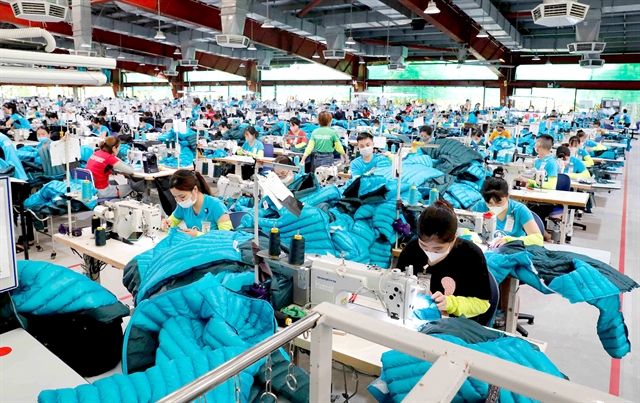 Economy
Economy


|
| A circular pig farming facility in Quảng Ngãi Province. — VNA/VNS Photo |
HÀ NỘI — The Ministry of Agriculture and Environment has proposed piloting multi-storey pig farming in Việt Nam, citing the model’s potential to modernise the country’s livestock sector and improve productivity.
In a report submitted to the Prime Minister on Thursday, Deputy Minister Phùng Đức Tiến said that BAF Việt Nam Agriculture Joint Stock Company and Xuân Thiện Thanh Hóa Joint Stock Company were seeking approval to adopt the model.
BAF Việt Nam is leading the initiative with a plan to build a six-storey smart pig farming complex in the southern province of Tây Ninh.
In partnership with China’s Muyuan Group, the world’s largest pig farming company, BAF aims to rear 64,000 sows and produce about 1.6 million commercial pigs per year.
The project has an estimated investment of more than VNĐ12,000 billion (US$457.59 million) and is expected to generate annual revenues of up to VNĐ13,000 billion ($495 million), with a projected payback period of over five years.
The proposal draws on China’s experience, where a booming population and high demand for pork, accounting for over 60 per cent of total meat consumption, have led to large-scale adoption of vertical farming.
Since 2018, China has developed more than 2,000 multi-storey pig farms, housing nearly 4,500 high-rise pig buildings that produce over 30 million pigs annually.
The ministry’s assessment highlights several advantages of the model over traditional farming methods. It integrates advanced technologies such as artificial intelligence, blockchain, automation, and real-time monitoring through sensors and imaging, allowing early detection of disease, accurate tracking of weight gain, and efficient herd management.
Biosecurity is also significantly enhanced through modern waste and emission treatment systems. These reduce water use and environmental impact while producing organic fertiliser for agriculture.
A four-layer air filtration system eliminates over 95 per cent of odours and sterilises outgoing air, helping prevent the spread of diseases such as African swine fever and porcine epidemic diarrhoea.
The model reduces land requirements and infrastructure costs, increasing land-use efficiency by over four times. It also cuts labour costs, with one worker capable of managing up to 2,000 pigs.
Việt Nam’s pig industry accounts for around 62–65 per cent of total meat production.
This year, national output is projected to reach 5.2 million tonnes, ranking Việt Nam sixth in the world. Average per capita pork consumption stands at 37.04kg, the fourth highest globally.
The government has issued various policies to promote digital transformation, automation, and standardisation in livestock farming. However, large-scale, multi-storey models remain limited. — VNS




